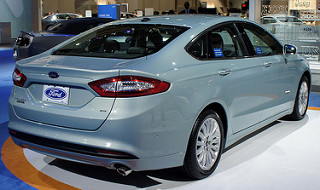How Companies Fight Back Against Counterfeit Goods on eBay

Reputable companies avoid gimmicks at all costs – including counterfeit goods. However, trustworthy businesses that sell on third-party sites might get “knocked off” the market without even trying.Companies that sell products on third-party sites are vulnerable to fraud via counterfeit competition. Counterfeiters that pose as the original businesses sell seemingly identical products, although the shipped products are vastly different than the item advertised (typically of a lower quality). Consumers are not happy and retailers are trying to fight back.
In the midst of this long-running scandal, new marketplaces with stronger fraud protection are ready for combat. Read on to learn how companies are taking control of counterfeit goods on eBay.
A History of Mix-ups

In the past, eBay in particular has been subject to many lawsuits regarding the sale of counterfeit goods by merchants on its site.
What’s more alarming is that according to Market Watch, “Mix-ups at Amazon.com Inc.’s warehouses have led to customers receiving counterfeit products — even when they’re buying from a legitimate third-party seller. Experts say eBay Inc. and others have also struggled to stem the rise of counterfeit goods, leaving it up to the consumer to distinguish what’s real and what’s fake.”
Meaning, in certain instances, even reputable sellers are subject to the threat of fake third-party items. Retailers such as L’Oreal and Tiffany and Co. have slammed eBay for its warehouse distribution practices and standards for merchant accounts.
Alibaba and the Case of Counterfeit Goods

The story of Alibaba – a China-based online marketplace – versus eBay broke when the company moved to become public. Like eBay, the company was no stranger to the sales of counterfeit goods on its website; however, its reputation was already damaged due in part to the company’s location.
Many consumers associate counterfeit goods with China, and the country’s negative overtones are not unfounded. In 2013, the country was responsible for almost 93 percent of the world’s imitated and infringed products.
Marketplace Makeover
Sites like eBay are appealing to many retailers since they provide an all-in-one platform for selling and, in some cases, distribution. However, ready-made solutions can come at a price – or the cost of control.
To fight counterfeit products on third-party marketplaces, Alibaba instead built a stronger, proprietary army complete with a regulated platform and trusted in-house distribution. The company will become direct competition for Amazon and eBay, and analysts believe the company’s stance on counterfeit goods will strengthen its role in the market.
How will the company compete? Addressing issues similar to eBay’s warehouse mix-ups, Alibaba will focus on updating and streamlining its warehouse processes. The company will not only improve its own distribution centers, but commit to refurbishing and building structures throughout China.
Reuters notes, “Improving the logistics of China’s warehouses has been prioritized by none other than Alibaba co-founder Jack Ma. Last year, Alibaba announced a plan to lead a consortium to invest $16 billion in the first phase of building a national logistics business, a unit of Alibaba to be chaired by Ma.”
Has your company been caught in the crosshairs of a counterfeit scandal? What was the damage control process? Share your stories in the comments below.







